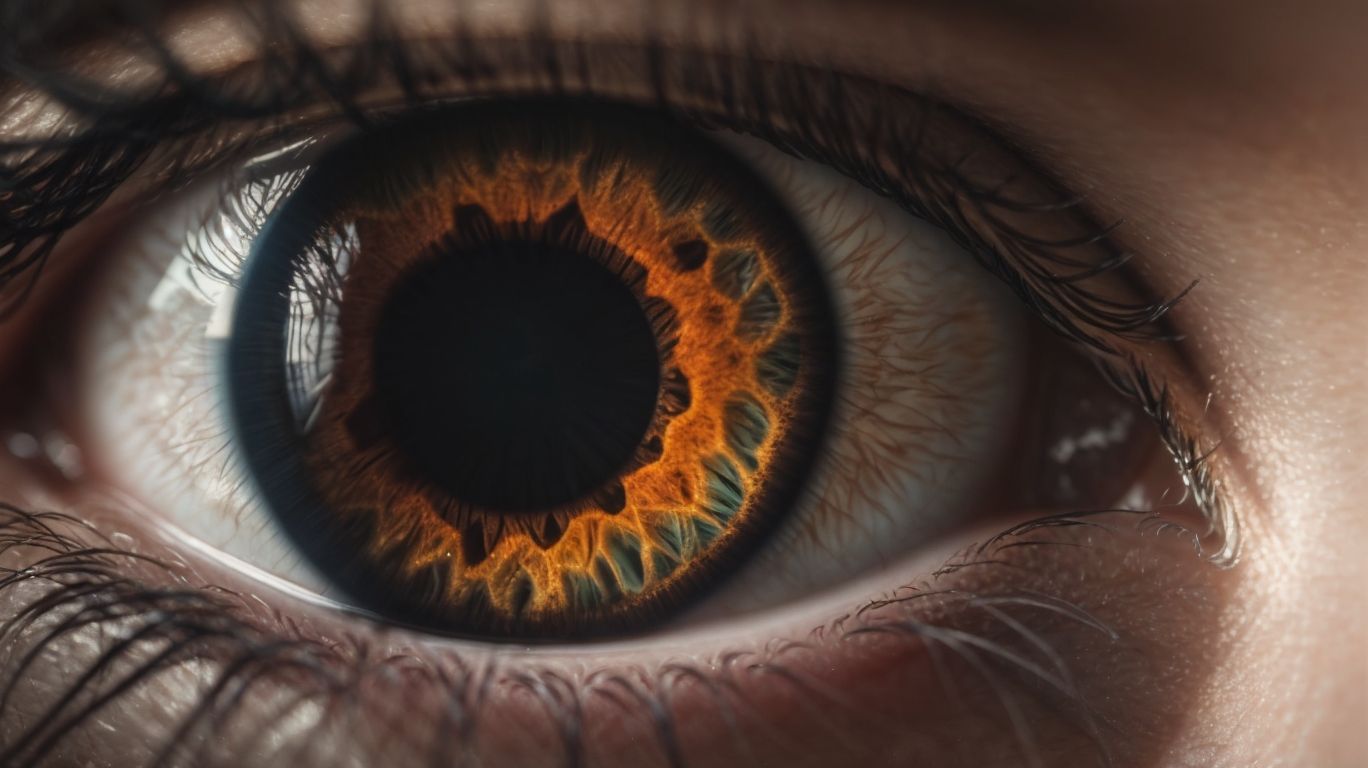Have you ever wondered about the meaning and significance of the term ‘pupil’ in psychology? In this article, we will explore the various aspects of pupil size and its measurement, functions, factors affecting its size, abnormalities, and its use in psychological studies.
From regulating light entering the eye to providing insights into cognitive processes and emotional states, the pupil plays a crucial role in understanding human behavior and psychology. So, let’s dive into the fascinating world of pupil in psychology!
Contents
- 1 Key Takeaways:
- 2 What Is the Meaning of ‘Pupil’ in Psychology?
- 3 How Is Pupil Size Measured?
- 4 What Are the Functions of Pupil?
- 5 What Factors Affect Pupil Size?
- 6 What Abnormalities Can Occur with Pupil Size?
- 7 How Can Pupil Size Be Used in Psychological Studies?
- 8 Frequently Asked Questions
- 8.1 What is the definition of ‘pupil’ in psychology?
- 8.2 How does the size of the pupil relate to psychological processes?
- 8.3 What can the changes in pupil size indicate about a person’s emotional state?
- 8.4 Can pupil size be used as a measure of deception?
- 8.5 How is the concept of pupil used in psychological research?
- 8.6 Are there any disorders or conditions that can affect pupil size?
Key Takeaways:
- Pupil is the opening in the center of the iris that regulates light entering the eye and provides information about cognitive processes and emotional states.
- Pupil size can be measured using pupillometry and can be affected by light levels, emotional arousal, and medications/drugs.
- Pupil size can be used in psychological studies to measure eye movement and attention, as well as for pupillometry in lie detection and studying the relationship between pupil dilation and decision making.
What Is the Meaning of ‘Pupil’ in Psychology?
The pupil, in the field of psychology, refers to the black circular opening in the center of the iris of the eye.
The autonomic nervous system is a crucial component and plays a significant role in cognitive processes. It controls the pupil’s size and adjusts it in response to stimuli.
Pupillometry, the science of measuring and analyzing pupils’ responses, has provided valuable insights into brain activity, emotions, and mental workload.
Scientists use sophisticated tools to track and interpret pupil dilation, contraction, and other autonomic responses. This sheds light on the intricate relationship between the mind and the body.
How Is Pupil Size Measured?
Pupil size is measured through a process known as pupillometry, which involves the scientific research of recording and analyzing the changes in pupil diameter.
Pupillometry is a key tool in neuroscience, as it facilitates the investigation of neural impulses and the autonomic nervous system.
The process typically involves using specialized equipment to illuminate the eye and record its response, allowing for precise measurement of pupil dilation and constriction.
Through meticulous data analysis, researchers can glean valuable insights into cognitive and emotional processing. This is because pupil size is intricately linked to these functions.
Pupillometry plays a crucial role in various fields, spanning from psychology and neurology to ophthalmology, by providing a non-invasive method of assessing autonomic nervous system activity.
What Are the Functions of Pupil?
The pupil serves several important functions, including regulating the amount of light that enters the eye and providing valuable insights into cognitive and emotional processes.
Regulates Light Entering the Eye
The pupil plays a crucial role in regulating the amount of light that enters the eye, adjusting its diameter based on the ambient brightness and scientific research has provided noninvasive measures for its assessment.
Research has shown that the diameter of the pupil is controlled by the iris muscles, which respond to the intensity of light. In dim light, the pupil dilates to allow more light to enter, while in bright light, it constricts to reduce the amount of light.
This automatic adjustment is essential for maintaining optimal visual acuity and protecting the eye from potentially harmful levels of light.
Scientists have developed noninvasive techniques for measuring pupil responses, such as pupillometry, which involves tracking changes in pupil size in response to light stimulation.
Advanced imaging technologies, such as infrared pupillometry, enable precise and objective assessment of pupil reactions, aiding in the diagnosis of various ocular and neurological conditions.
Provides Information About Cognitive Processes
The pupil provides valuable information about cognitive processes, responding to tasks, memory formation, and cognitive load, with connections to brain regions such as the visual cortex and locus coeruleus.
In the realm of cognitive psychology, the pupil plays a pivotal role in regulating the amount of light that enters the eye. This impacts visual clarity and influences cognitive processes. The modulation of light affects visual acuity, concentration, and the brain’s capacity to process information.
One area where the pupillary response is particularly important is in memory formation and recall. It is deeply intertwined with cognitive load, adjusting according to the mental effort required for different tasks.
The visual cortex and its connections with the pupil and locus coeruleus highlight its significance in understanding the brain’s mechanisms underlying attention, perception, and memory.
Can Indicate Emotional States
The pupil can indicate emotional states, responding to emotional arousal and the activation of the autonomic nervous system, including the sympathetic and parasympathetic pathways.
These responses are vital in signaling the individual’s emotional and psychological well-being, providing insight into their internal experiences.
The pupil’s dilation or constriction reflexively mirrors the ebb and flow of emotional arousal, which is intricately linked to the autonomic nervous system’s workings.
The sympathetic nervous system triggers the pupil to dilate, facilitating the fight-or-flight response, enhancing visual acuity to perceive potential threats.
In contrast, the parasympathetic nervous system leads to pupil constriction, promoting rest and digestion, and signaling a state of calm and relaxation.
What Factors Affect Pupil Size?
Several factors can influence pupil size, including variations in light levels, emotional arousal, and the effects of medications and drugs, providing insights into physiological truth through scientific research.
Light levels play a crucial role in regulating pupil size. In bright light, the pupil constricts to limit the amount of light entering the eye, whereas in dim light, it dilates to allow more light in.
Emotional arousal, such as excitement or fear, can also cause pupil dilation, a response linked to the activity of the brain’s autonomic nervous system.
Certain medications and drugs, such as opioids and stimulants, can have a direct impact on pupil size as a side effect of their physiological effects.
Light Levels
Light levels play a significant role in influencing pupil size, triggering neural impulses that lead to changes in pupil diameter, with scientific research focusing on the impact of ambient brightness.
When light levels change, the pupil size adapts to optimize visual perception.
In dim light, the pupil dilates (enlarges) to allow more light to enter the eye, enhancing the visual sensitivity. Conversely, in bright light, the pupil constricts (narrows) to reduce the amount of light entering the eye, thus preventing an overwhelming influx of light that can potentially damage the retina.
These adjustments are brought about by the autonomic nervous system, in response to the intensity of light stimulation.
Emotional Arousal
Emotional arousal exerts a significant influence on pupil size, reflecting cognitive load and activation of the autonomic nervous system, with implications in neuroanatomy and scientific journalism.
Research has shown that the pupil dilation response is closely linked to emotional and cognitive processes, providing valuable insights into the inner workings of the human mind.
The intricate connection between the autonomic nervous system and pupil size modulation highlights the dynamic interplay between physiological and psychological factors.
This phenomenon has profound implications for understanding cognitive demands and emotional states in neuroscientific studies.
These findings have the potential to inform advancements in scientific journalism, enabling a deeper understanding of the neurological underpinnings of emotion and cognition.
Medications and Drugs
The effects of medications and drugs on pupil size are of interest in the field of neuropharmacology, providing insights into the anatomy and brain influence through scientific research.
It is well-established that certain medications and drugs can significantly alter pupil size, a phenomenon extensively studied in neuropharmacology.
These alterations offer valuable insights into the intricate connections between the medication’s mechanisms of action and the neural pathways governing pupil dilation and constriction.
These effects serve as a reliable indicator of the drug’s influence on the autonomic nervous system, helping researchers understand the pharmacological impact on neurological processes and brain function.
What Abnormalities Can Occur with Pupil Size?
Various abnormalities can manifest in pupil size, including conditions such as anisocoria, miosis, and mydriasis, prompting scientific research and measurement by scientists.
Anisocoria refers to an inequality in the size of the pupils, often indicating an underlying neurological issue.
Miosis involves constriction of the pupils, commonly observed in bright light or due to certain medications.
Conversely, mydriasis presents as dilated pupils, potentially stemming from neurological conditions or drug use.
These abnormalities are crucial indicators in diagnosing various health issues, and studying their causes and effects provides valuable insights into the complexities of the human eye and related medical conditions.
Anisocoria
Anisocoria, an abnormality characterized by unequal pupil sizes, poses intriguing questions in neuroanatomy and prompts scientific research into its connection with cognitive load.
The condition occurs when one pupil is larger or smaller than the other, often caused by underlying neurological issues.
The relationship between anisocoria and cognitive load has drawn attention from researchers, with some studies suggesting a potential correlation.
This has led to investigations into the influence of autonomic nervous system functioning and the brain’s response to cognitive tasks on pupil size asymmetry, providing valuable insights into the complex interactions between the neurological and cognitive domains.
Miosis
Miosis, an abnormal constriction of the pupil, is tied to the autonomic nervous system and emotional responses, prompting the need for precise measurement and assessment.
The autonomic nervous system regulates involuntary bodily functions, including pupil size.
Miosis, often associated with intense emotions or neurological conditions, can reflect changes in the sympathetic and parasympathetic systems.
Assessing miosis requires meticulous observation and measurements using specialized instruments, such as a pupillometer, to accurately quantify pupil size.
These assessments play a crucial role in diagnosing underlying health conditions and monitoring the effectiveness of treatment.
Mydriasis
Mydriasis, an abnormal dilation of the pupil, involves the interplay between the sympathetic and parasympathetic pathways, offering intriguing avenues for research into its connection with arousal.
This phenomenon, occurring when the sympathetic pathway dominates, results in the pupil’s enlargement. It is a critical function of the autonomic nervous system, demonstrating the delicate balance between sympathetic and parasympathetic control.
The strong association with arousal has piqued the interest of researchers, hinting at the potential role of mydriasis as a physiological indicator of emotional and cognitive processes.
How Can Pupil Size Be Used in Psychological Studies?
Pupil size serves as a valuable tool in psychological studies, offering insights into eye movement, attention, and cognitive processes, with applications in pupillometry, lie detection, and decision making.
Through pupillometry, researchers can analyze variations in pupil size to measure mental workload, arousal, and emotional responses, shedding light on the underlying cognitive processes.
In lie detection, changes in pupil dilation can indicate cognitive load, potentially unveiling deception.
Pupil size plays a crucial role in decision making, as dilated pupils have been associated with increased consideration of uncertain options and heightened cognitive effort.
Eye Movement and Attention
Pupil size provides valuable insights into eye movement and attention, shedding light on cognitive processes and their connections to brain regions such as the visual cortex and locus coeruleus, with implications for concentration.
Studies have revealed that variations in pupil size are closely linked to the activity of the visual cortex, the part of the brain responsible for processing visual information.
Additionally, locus coeruleus activity has been associated with changes in pupil size, indicating its role in regulating attention and arousal.
This intricate interplay between these brain regions and the dynamic nature of pupil size provides valuable clues about an individual’s cognitive state and psychological processes.
Pupillometry in Lie Detection
Pupillometry, utilizing pupil size, plays a role in lie detection, tapping into the autonomic nervous system and emotional arousal, with avenues for scientific research in this domain.
By measuring changes in pupil dilation, pupillometry offers insight into cognitive processes and emotional responses that are implicated in deception. The variations in pupil size can reflect the cognitive load and arousal associated with fabricating a lie.
Research has shown that individuals tend to exhibit greater pupil dilation when generating deceptive responses, indicating the involvement of the autonomic nervous system.
Pupillometry is instrumental in discerning the genuine emotional reactions accompanying deceitful statements. It provides a non-invasive means of uncovering physiological markers linked to deceptive behavior.
This has significant implications for forensic investigations and interrogations, as it offers an additional layer of objective assessment to complement traditional methods of lie detection.
Pupil Dilation and Decision Making
Pupil dilation has implications for decision making, reflecting cognitive load, perception, and the interplay with the autonomic nervous system and arousal, offering insights into cognitive processes.
When we consider pupil dilation, it is not merely a physical response but a reflection of the cognitive mechanisms at play. Studies have shown that pupil dilation correlates with cognitive load, indicating the mental effort invested in decision making.
This suggests that larger pupil sizes are associated with higher cognitive demands, providing a tangible measure of the cognitive processes involved.
Pupil dilation is intricately linked to perception, as it influences the amount of light entering the eye, affecting visual acuity and depth perception.
Frequently Asked Questions
What is the definition of ‘pupil’ in psychology?
In psychology, the term ‘pupil’ refers to the dark circular opening at the center of the iris in the eye, which controls the amount of light that enters the eye.
How does the size of the pupil relate to psychological processes?
The size of the pupil is closely linked to psychological processes such as arousal and attention. When a person is aroused or engaged in a task, their pupil tends to dilate, and when they are relaxed or disengaged, their pupil tends to constrict.
What can the changes in pupil size indicate about a person’s emotional state?
Changes in pupil size can reveal a person’s emotional state, as the sympathetic nervous system controls pupil dilation in response to emotional stimuli. For example, fear or excitement can cause the pupils to dilate, and anxiety or stress can cause them to constrict.
Can pupil size be used as a measure of deception?
Some studies have suggested that pupil size can be used as a measure of deception, as lying can cause a person’s pupils to dilate due to the increased cognitive effort and arousal involved in deception. However, this is not a foolproof method and should be used in conjunction with other cues.
How is the concept of pupil used in psychological research?
In psychological research, pupil size is often used as a measure of cognitive and emotional processes. By tracking changes in pupil size, researchers can gain insights into attention, perception, emotion, and other psychological phenomena.
Are there any disorders or conditions that can affect pupil size?
Yes, there are certain disorders and conditions that can affect pupil size, such as Horner’s syndrome, Adie’s tonic pupil, and anisocoria. Additionally, certain medications and drugs can also cause changes in pupil size.




